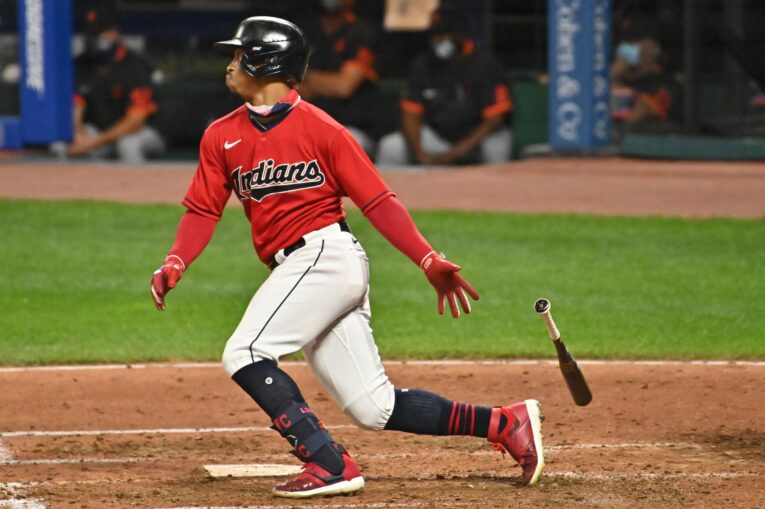
Francisco Lindor is a New York Met. It’s been that way for a week now, but it still feels weird to say out loud. Thankfully, we didn’t end up getting punked.
Over the past seven days, there have been tons of virtual ink spilled on this lovely website and many others across the interwebs about just how big this particular acquisition is for the orange and blue. It’s all accurate because he’s been one of baseball’s best players since debuting for Cleveland in 2015 — only Mike Trout and Mookie Betts have accumulated more fWAR than Lindor’s 28.9. And despite the game being full of terrific young shortstops over the past few years, Mr. Smile’s fWAR is at the top of the positional leaderboard since landing in the big leagues.
That’s all stuff we already know, though. When thinking about the magnitude of this trade for the Mets organization itself, there are a couple of recent organizational trends he can stop by sticking around in Queens for the next few years if he inks an extension.
Homegrown No More
Back in April, which feels like 20 years ago, we were all trying to find ways to stay occupied during the early days of the pandemic. One of the ways I’ve been escaping is by going down baseball black holes, whether it’s on Baseball Reference, FanGraphs, YouTube, or something else. One particular journey had me going down the rabbit hole of who played the majority of games at shortstop for the Mets over the past 25 years or so.
What I found was that the majority of New York’s primary shortstops have been homegrown during that period of time. As a review, here are the homegrown Mets players who have led the team in games played at shortstop since 1996, and the years in which they accomplished this:

On the flip side, here are the non-homegrown players who have done the same thing:

The Mets have made a handful of franchise-altering trades and free-agent signings during their existence, but shortstop hasn’t been a focus. Guys like Keith Hernandez, Gary Carter, Mike Piazza, Yoenis Cespedes, and Carlos Beltran immediately come to mind when thinking about deals that changed the landscape of the organization, and clearly, none of them were shortstops.
Since Rey Ordonez became New York’s starting shortstop in 1996, there’s never been an outside acquisition for the Mets that has led the team in games played at the position for consecutive years. As it currently stands, Lindor wouldn’t break that trend either, but let’s be hopeful an extension is in the near future so he can accomplish this.
Oh, Yea… The Production
It’s already been well established that Lindor has been one of baseball’s best players. The 2021 season will be his age-27 campaign, which hypothetically means the best is yet to come as he enters his physical prime. After seeing what he’s already accomplished, it’s impossible to not be excited.
Between 2015 and 2019, Lindor posted an fWAR of at least 4.0 in each season (4.0, 5.5, 5.7, 7.6, 4.4). Meanwhile, the Mets have seen one of their shortstops produce 4.0-plus fWAR in a season just four times in the franchise’s entire existence.
All of these occurrences belong to Jose Reyes (5.8 in ‘08 and ‘11, 5.7 in ‘06, and 5.6 in ‘07). Since he left via free agency, it’s obviously been a winding road for New York to find a long-term solution at the position, and the efforts haven’t yielded consistent results. There have only been three different occasions where a Mets shortstop put up 2.0-plus fWAR in a single season since 2012 (Asdrubal Cabrera’s 3.6 in ‘16, Reyes’ 2.0 in ‘17, and Amed Rosario’s 2.7 in ‘19).
So, merely doing what he’s typically done in his young career will help Lindor break another recent trend among Mets shortstops.
A Chance To Be Revered
Based off his social media activity, what he said at his introductory press conference, and how he made a little boy’s life the other day, Lindor is already loved in New York before even taking the field. And one can hope that once the games start, this feeling of affection only strengthens amongst the fan base.
If Lindor does sign an extension and is in Flushing for the foreseeable future (fingers crossed), he’ll easily put a stop to the Mets’ recent homegrown shortstop trend. Since he’s still so young, there’s also plenty of opportunity for him to climb the franchise leaderboards rather quickly.
His Steamer projection for 2021 would certainly help propel him in that direction — he’s currently projected to accrue 4.8 fWAR with 33 home runs, 90 RBI, and 99 runs scored. Lindor’s potential impact to the Mets is obviously why the front office swung this trade in the first place. If he sticks around and continues his current career trajectory, though, his name will roll off our tongues with the likes of Piazza, Hernandez, Reyes, and David Wright when talking about some of the best in franchise history.
And that, would be unbelievably awesome.
















